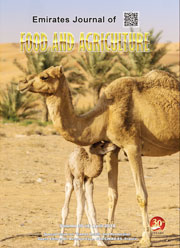PHYSIOLOGICAL RESPONSES TO DROUGHT IN FOUR DEVELOPED TRITICUM AESTIVUM GROUPS
DOI:
https://doi.org/10.9755/ejfa.v27i2.19277Keywords:
Membrane integrity, Photosynthetic activity, Triticum aestivum, Water deficit, YieldAbstract
Restricted water availability and yield reductions derived from climate changes have become a strong concern as regards fundamental crops, such as wheat. There is an increasing need to characterize germplasm diversity in order to highlight drought tolerant genotypes and to assist Portuguese wheat breeding programs. Bread wheat (Triticum aestivum) varieties were selected from four different evolutive and/or breeding groups: ancient landraces, traditional varieties, modern currently used and advanced lines. The aim of this work was to identify physiological traits that contribute to drought tolerance during grain filling period. Plants were cultivated in pots, under semi-controlled greenhouse conditions. Drought was imposed by withholding irrigation after anthesis. Well irrigated and water stressed plants were compared as regards leaf gas exchanges (net photosynthetic rate, Pn; leaf stomatal conductance, gs; transpiration, E), instantaneous water use efficiency (iWUE), membrane electrolyte leakage, osmotic potential and leaf pigments. Subsequently, plants were maintained under a controlled irrigation (droughted plants: 50% of the water given to fully irrigated controls) until harvest, to quantify yield. Pn and gs were significantly reduced by drought in all varieties. As regards membrane integrity ancient and traditional varieties presented lower membrane injury, what may reflect a higher protoplasmic tolerance to drought. More evolved varieties (modern and advanced) showed higher spike weight per plant and number of grains per spike, disregard the water regime. Under water deficit 1000 kernel weight was reduced in all varieties except in traditional Pirana, which also showed an increase in the number of spikes per plant. Higher membrane stability, increased pigments and lower osmotic potential under drought may underly such improved response to drought, pointing this variety as an interesting genetic resource for breeding purposes.










 .
. 